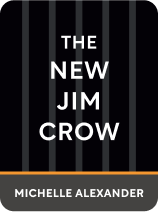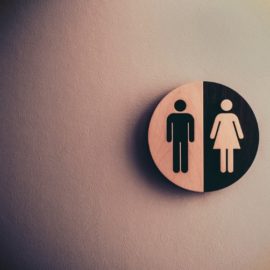

This article is an excerpt from the Shortform summary of "The New Jim Crow" by Michelle Alexander. Shortform has the world's best summaries of books you should be reading.
Like this article? Sign up for a free trial here .
What are racial sentencing disparities? Is there a difference in prison sentencing by race?
Racial sentencing disparities is a term that refers to the inequitable treatment of people of different races. In The New Jim Crow, Michelle Alexander discusses race and sentencing disparities.
Read on to understand racial sentencing disparities as discussed in The New Jim Crow.
Courts Maintain Racial Sentencing Disparities
In McCleskey v. Kemp, the Supreme Court ruled that statistical evidence of bias was insufficient for discrimination – there needed to be clear evidence of conscious racial bias.
- In this case in particular, the court believed that studying 2,500 cases with different personnel, officials, judges, and jurors did not present a clear enough explicit common mechanism.
- However, rules bar litigants from obtaining information on prosecution motives and jury deliberations. Ironically, the catch-22 became: to prove their case, the litigant needed evidence that is only obtainable upon winning a case. Without the evidence, the litigant loses the case, which prevents them from gaining the evidence.
Part of the motivation was the reluctance to question the integrity of the entire system. If drug war was shown to be racially biased, it might open up contests in the death penalty, life sentences, and other deeply embedded issues in racial sentencing disparities. Questioning prosecutorial discretion would upend countless cases. A “too big to fail” example.
The Supreme Court ruled that the state is immune from federal suits for damages; city police can’t be sued for damages unless a specific explicit policy supports illegal practice.
In US vs Brignoni-Ponce, the Supreme Court ruled that race could not be the sole factor in police stop and searches, but that race could be a relevant factor as long as it’s not the only one. This is just the start of the trajectory that includes racial sentencing disparities.
- Thus one could stop and search for any factor correlated with race – clothing, age, and location.
- Even something as seemingly impartial as prior criminal record is not race-neutral – since blacks are so much more likely to have criminal records.
Title VI prohibits federally funded programs, like police departments, from discriminating on race. However, in Alexander v. Sandoval, the Supreme Court ruled that private citizens and groups cannot sue on Title VI grounds – only the federal government could sue. Thus racial profiling challenges have disappeared and racial sentencing disparities continue.
Each Supreme Court decision obviously has trickle-down effects on federal and appellate courts.
In summary, the New Jim Crow:
- Uses the War on Drugs to arrest large numbers of black men, through strong financial incentives and legal protection of discretion that may be racially biased.
- In essence, black men are made criminals at higher rates than white men, despite not having significantly higher rates of drug crime.
- Hands down disproportionately harsh sentences to black men and limits effective legal representation (exacerbating racial sentencing disparities).
- Imposes sanctions on ex-criminals outside of prison that prevent reintegration and encourage recidivism.
- (Shortform addition: This environment (absent fathers, racial stigma) disadvantages black youth and adds them back into the cycle.)
Barriers to Overturning the New Jim Crow
There are many forces entrenching the current system, and therefore just as many obstacles preventing it from being upended.
Civil rights movements used to be about grassroots organizing and gathering critical mass of public opinion. However, of late, civil rights organizations became professionalized, heavily centered on lawyers and litigation, and distanced from the communities they were supposed to represent.
- Lawyers focus on problems that can be solved with litigation. But mass incarceration isn’t that problem, especially given the Supreme Court’s barriers on litigation in this area, described above.
- Plus, small policy changes, like lightening drug crime sentences, have little effect – it’s entering the system itself that is a huge disadvantage.

———End of Preview———
Like what you just read? Read the rest of the world's best summary of Michelle Alexander's "The New Jim Crow" at Shortform .
Here's what you'll find in our full The New Jim Crow summary :
- How the US prison population increased 10x in 30 years because of harsh drug policies
- How being "tough on crime" was deeply motivated in discrimination against black people
- Why being convicted for a crime is essentially a life sentence of poverty and return to prison






